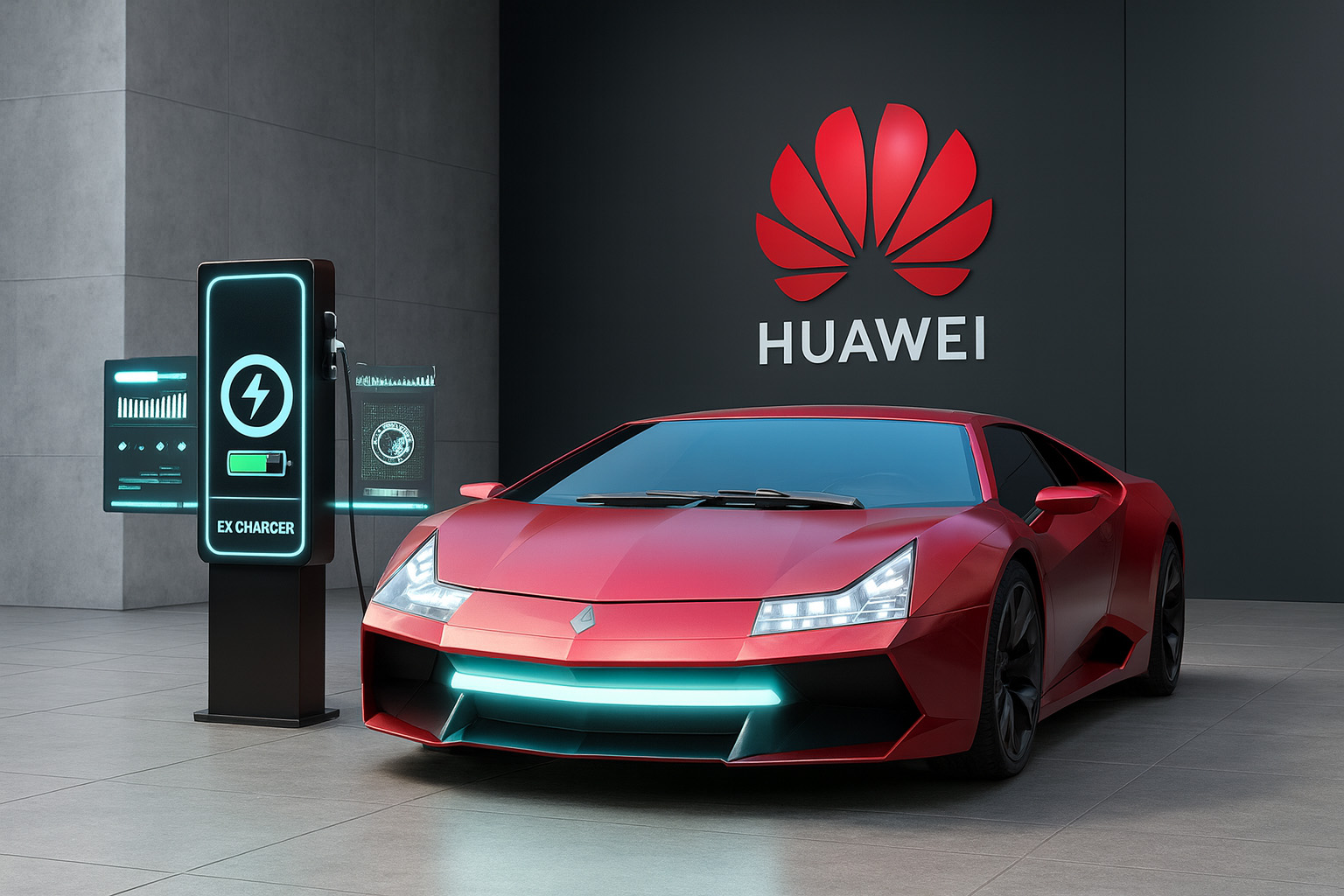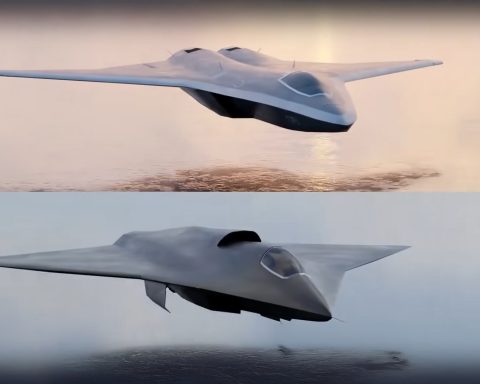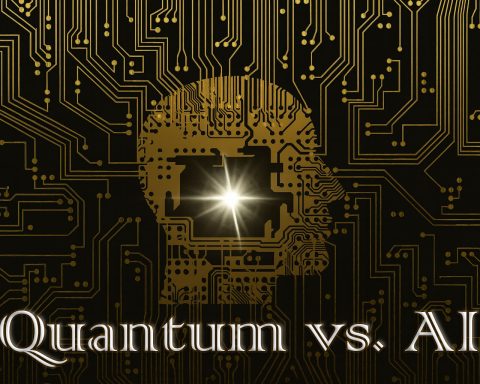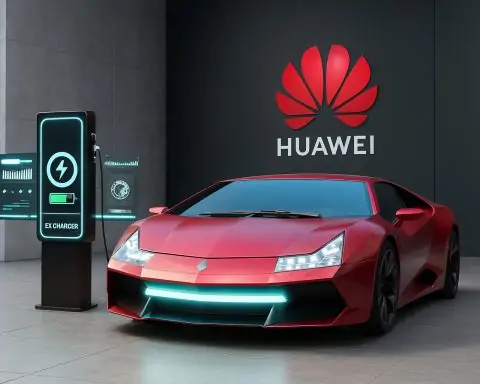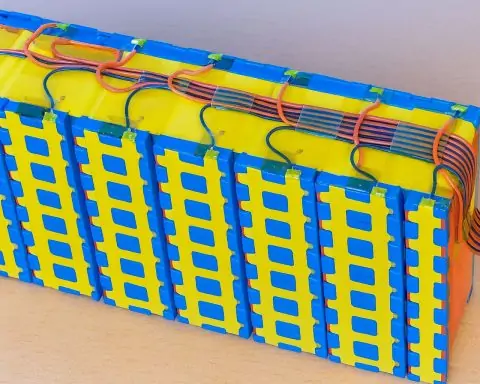- What happened: Huawei filed a patent for a sulfide‑based, all‑solid‑state battery that secondary reports say could enable up to 3,000 km (≈1,864 miles) of range and sub‑five‑minute charging. This is not a commercial product announcement. CarNewsChina.com
- Core idea: A nitrogen‑doped sulfide solid electrolyte designed to form Li₃N at the lithium‑metal interface—aimed at suppressing dendrites, stabilizing the interface, and improving cycle life and safety. (Patent CN118899435A, Huawei Technologies.) Google Patents
- Reported metrics: Energy density 400–500 Wh/kg (cell level, per media reading of the patent); electrolyte ionic conductivity up to ~0.8–0.9 mS/cm in argyrodite Li₆PS₅Cl:SCN compositions; >1,800 h of stable Li|SSE|Li cycling at room temperature in lab cells. CarNewsChina.com
- Reality check: Delivering 3,000 km after ~5 minutes would require multi‑megawatt charging—roughly 6–8 MW depending on vehicle efficiency. Today’s emerging Megawatt Charging System (MCS) for heavy trucks tops out at ≈3.75 MW. In other words, the claimed charge rate is beyond the envelope of current public standards. CarNewsChina.com
- Context: The world’s biggest battery makers and automakers (CATL, Toyota, Stellantis/Factorial) are pushing fast‑charge or solid‑state tech, but near‑term commercial targets are far more modest (e.g., 520 km in 5 minutes for CATL’s new Shenxing variant; solid‑state EVs by 2027/28 for Toyota; ~375 Wh/kg cells demoed by Factorial). The Verge
The in‑depth explainer
What Huawei actually filed (and why it matters)
Huawei’s patent (CN118899435A, published Nov 5, 2024) describes doping sulfide solid electrolytes with nitrogen‑containing groups so that, against a lithium‑metal anode, a stabilizing lithium nitride (Li₃N) interphase forms. In lab data included in the filing:
- Certain Li₆PS₅Cl:SCN⁻ compositions achieve ionic conductivities ~0.75–0.9 mS/cm at room temperature—high for solid electrolytes.
- Symmetric Li|SSE|Li cells cycled stably for >1,800 hours at 0.2 mAh/cm², indicating improved interfacial stability vs. undoped baselines.
These details target two of the hardest problems in sulfide solid‑state batteries: interfacial side reactions and lithium dendrites. Google Patents
Why sulfides? Among solid electrolytes (oxides, polymers, halides), sulfides offer high ionic conductivity and good interfacial wetting, but they’re air‑sensitive and chemically reactive against Li metal—historically causing H₂S release, interfacial instability, and dendrite penetration. Huawei’s nitrogen‑doping approach is a plausible pathway to mitigate those issues, aligning with strategies highlighted in recent academic reviews. MDP
Where do the “3,000 km” and “<5‑minute charge” claims come from?
Several outlets reported that Huawei’s patent could enable up to 3,000 km of range and sub‑five‑minute charging. Those numbers appear in media coverage summarizing the patent and extrapolating potential performance (they are not hard specs proven in a commercial cell or vehicle). Most reports cite 400–500 Wh/kg energy density at the cell level and theorize extreme fast charging. CarNewsChina.com
A number of analysts and auto media have responded with skepticism, emphasizing that these are patent‑stage claims without third‑party validation, hardware demos, or a production timetable. autoevolution
Does the math check out?
Let’s sanity‑check the power such a battery would need to realize those headlines in a modern EV:
- Typical EV consumption today spans roughly 14–24 kWh/100 km (from ultra‑efficient sedans like the Hyundai Ioniq 6 at 13.9 kWh/100 km (WLTP) to the fleet average in U.S. data at ~23.7 kWh/100 km). Hyundai News
- Energy for 3,000 km: ~420–710 kWh.
- Charging in 5 minutes (1/12 hr): average power ~5–8.5 MW.
That aligns with independent press estimates (~8 MW), far above today’s passenger‑car ultrafast chargers and even beyond the new MCS envelope (~3.75 MW max) being piloted for heavy trucks. Such power would also demand massive cables, advanced cooling, and grid upgrades at stations. CarNewsChina.com
Pack mass check: Even at 500 Wh/kg (cell level), storing ~600 kWh of energy implies ~1,200 kg of cells before pack overhead (enclosure, cooling, BMS). Today’s best production packs reach ~160–255 Wh/kg at the pack level depending on chemistry (CATL Qilin figures), so achieving 3,000 km in a sedan without a very large/heavy pack would require breakthroughs both in cell chemistry and pack integration. CATL
How it compares to the state of the art
- CATL Shenxing (gen‑2): ~520 km of range from 5 minutes of charge; 80% in 15 minutes, even in cold conditions—shipping into dozens of models this year. This is orders of magnitude more conservative than the 3,000‑km claim but reflects what’s near‑term practical. Reuters
- Toyota solid‑state roadmap: commercial all‑solid‑state EVs by 2027–2028, but not with 3,000‑km/5‑minute promises. Toyota and Sumitomo Metal just announced new cathode progress; timelines still extend to late decade. Reuters
- Stellantis/Factorial: 77 Ah FEST solid‑state cells validated with ~375 Wh/kg and 15→90% in 18 minutes—again, ambitious but within plausible engineering limits and demo fleets targeted around 2026. The Verge
The technology in plain English
- Solid‑state sulfide electrolyte: Replaces flammable liquid electrolyte with an ion‑conducting solid.
- What Huawei tweaks: Add nitrogen‑bearing dopants into argyrodite‑type sulfides (e.g., Li₆PS₅Cl) so that, at the lithium surface, Li₃N naturally forms. Li₃N is an ionically conductive, more stable buffer that can evenly plate/strip lithium, helping to suppress dendrites. Lab data in the patent shows mS/cm‑class ionic conductivity and long, stable cycling of symmetric cells. Google Patents
What still must be proven
- Full‑cell performance & durability: The patent shows symmetric Li|SSE|Li data and materials‑level conductivity. The leap to high‑capacity full cells (high‑loading cathodes, practical areal capacities, fast‑charge cycling, wide temps) remains to be shown publicly. Google Patents
- Safety & manufacturability: Sulfides are moisture‑sensitive, can emit H₂S if mishandled, and face interfacial and mechanical challenges under real cycling loads; new process routes are being researched to make them air‑tolerant and scalable. MDPI+1
- Charging ecosystem: Even if a cell could accept it, 5–8 MW passenger‑car charging requires MCS‑class infrastructure—and MCS tops out at ~3.75 MW today and is aimed at heavy trucks, not sedans. Grid connections, station cooling, and connector ergonomics would all be major projects. InsideEVs
- Pack‑level energy density: Media‑quoted 400–500 Wh/kg is cell level. System‑level density tends to be lower; even CATL’s best‑publicized packs are ≤255 Wh/kg, reminding us pack design is as crucial as chemistry. CATL
Provisional “spec sheet” (what’s reported vs. what’s real)
| Parameter | What’s reported / claimed | Evidence status |
|---|---|---|
| Chemistry | Sulfide all‑solid‑state with N‑doped electrolyte + lithium‑metal anode | Patent, lab data for materials & symmetric cells. Google Patents |
| Energy density (cell) | ~400–500 Wh/kg | Media reading of patent; not independently verified. CarNewsChina.com |
| Ionic conductivity (electrolyte) | ~0.75–0.9 mS/cm (Li₆PS₅Cl:SCN variants) | Patent lab data. Google Patents |
| Cycle stability (sym. cell) | >1,800 h at RT, 0.2 mAh/cm² | Patent lab data. Google Patents |
| Range per charge | Up to 3,000 km (theoretical) | Media claim; no vehicle demo. CarNewsChina.com+1 |
| Charge time | <5 minutes | Media claim; infrastructure‑limited today. TechRadar |
How to think about it
- The materials idea is credible and interesting. Using nitrogen to engineer a self‑forming Li₃N interphase has strong precedent in the literature and could meaningfully improve Li‑metal compatibility of sulfide electrolytes. ScienceDirect
- The headline numbers are aspirational. They bundle best‑case cell metrics with infrastructure that doesn’t exist for passenger cars and system‑level assumptions that are far from solved. It’s a patent, not a product—yet. autoevolution
- The industry trend is clear: Everyone is driving toward higher energy density and faster charging. The most credible near‑term wins (2025–2028) are: hundreds of km in single‑digit minutes on advanced Li‑ion (CATL Shenxing), and the first wave of all‑solid‑state demonstrators with moderate fast‑charge (Toyota, Stellantis/Factorial). The Verge
Bottom line
Huawei’s sulfide solid‑state patent is technically intriguing—especially its Li‑metal interface strategy and reported electrolyte conductivities. But 3,000 km after ~5 minutes is, for now, an extrapolation that collides with physics and infrastructure constraints. Watch for peer‑reviewed full‑cell data, pack‑level prototypes, and charging pilots before treating the headline as anything more than a stretch goal. Google Patents
Sources & further reading (highlights)
- Huawei patent: CN118899435A—nitrogen‑doped sulfide SSE, Li‑metal interface, conductivity & cycling data. Google Patents
- Media coverage of 3,000‑km/<5‑minute claims and 400–500 Wh/kg readings. CarNewsChina.com
- Skeptical takes emphasizing “patent, not product.” autoevolution
- Charging reality: MCS up to ~3.75 MW; Huawei‑scale claim implies ~6–8 MW. InsideEVs
- State of the art: CATL Shenxing (520 km in 5 min); Toyota solid‑state (2027/28); Factorial 375 Wh/kg cells/18‑minute fast charge. The Verge
